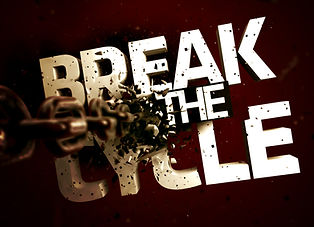
How does this Cycle of exploitation happen?
The Cycle of Exploitation: How Human Trafficking Perpetuates Itself
Human trafficking and sexual exploitation do not occur in isolation—they are part of a deeply systemic and generational cycle that keeps vulnerable individuals trapped. The cycle of exploitation is fueled by poverty, lack of education, social stigma, and systemic neglect, making it incredibly difficult for those affected to break free without intervention. In places like Daulatdia, Bangladesh, one of the largest brothel districts in the world, this cycle has existed for generations. Children born into the brothel often have no chance of escape, as every part of their environment pushes them toward exploitation.
Understanding how this cycle operates is crucial in effectively combating human trafficking. Below is a breakdown of the six key stages of the cycle of exploitation:
1. Vulnerability and Targeting
The cycle begins with vulnerability, as traffickers prey on individuals—most often women and children—who have few or no opportunities for survival. In Bangladesh, extreme poverty, gender inequality, lack of education, and family instability make people especially vulnerable.
Many women who end up in the brothel were sold by their families under the false promise of a job or marriage, only to be trapped in sex work with no way out. In other cases, girls run away from abusive homes, only to be lured by traffickers who promise safety and employment.
For the children of sex workers, their birth itself is a risk factor. Born into the brothel, these children are often seen as property of the system, with few legal protections or opportunities for escape.
2. Recruitment and Entrapment
Once a person is identified as vulnerable, traffickers use a variety of methods to trap them into exploitation. These include:
-
Deception – Traffickers promise jobs, education, or a better life but instead deliver victims into forced prostitution.
-
Abduction – Some victims, especially children, are kidnapped and trafficked into the brothel system.
-
Debt Bondage – Women are told they must work to "repay" an impossible debt, keeping them trapped indefinitely.
-
Familial Exploitation – Families sometimes sell their daughters into the brothel out of financial desperation.
Once inside the system, escape is nearly impossible. Brothel owners, traffickers, and even corrupt officials control every aspect of the victim’s life.
3. Exploitation and Abuse
Once trapped, the exploitation begins. Victims are subjected to daily abuse, psychological manipulation, and brutal control tactics to ensure compliance.
-
Girls as young as 10-12 years old are forced into prostitution.
-
Victims are given drugs or alcohol to keep them compliant.
-
Violence and threats are used to maintain control.
-
Women and children are forced to service dozens of clients per day, ensuring profit for traffickers and brothel owners.
Many women give birth in the brothel, and their children inherit the same fate, continuing the cycle of exploitation.
4. Stigma and Social Rejection
Even if a victim tries to leave, society makes escape nearly impossible. The stigma of being associated with the brothel follows women and children throughout their lives.
-
Schools and businesses refuse to accept children born in the brothel.
-
Society rejects sex workers, making it impossible for them to find legitimate jobs.
-
Many survivors fear being arrested or re-trafficked if they attempt to leave.
With no education, no employment opportunities, and no social acceptance, many women have no choice but to remain in the brothel, and their children inherit the same cycle of exploitation.
5. Generational Entrapment
The most heartbreaking part of this cycle is its self-perpetuating nature. Many of the children born in brothels never get the chance to break free because the system is designed to keep them trapped.
-
Girls born in the brothel are often groomed from a young age to enter prostitution.
-
Boys born in the brothel often become pimps, traffickers, or enforcers, perpetuating the system.
-
Without education or intervention, these children have nowhere else to go.
This multi-generational exploitation is why programs like House of Hope and the Meena Project are so vital—they offer the only way to break this cycle.
_edited_edited.png)

_edited.png)

.jpeg)
6. Breaking the Cycle: The Importance of Intervention
The only way to end this cycle is through education, safe housing, legal advocacy, and economic alternatives. That’s where organizations like Freedom Rising make a difference.
-
Education & Child Sponsorship – Giving children access to schooling prevents them from falling into the cycle of trafficking.
-
Rescue & Rehabilitation Programs – Safe homes like the Meena Project remove girls from the brothel and give them a future beyond exploitation.
-
Vocational Training – Providing alternative careers for mothers reduces their dependency on the brothel system.
-
Social & Legal Advocacy – Fighting stigma and changing laws ensures that survivors can reintegrate into society.
Without intervention, the cycle of exploitation continues indefinitely. Every child saved, every woman given an opportunity, and every supporter who takes action is part of the solution to ending human trafficking.Will you join us in breaking the cycle?
👉 Donate, advocate, and take action today.
